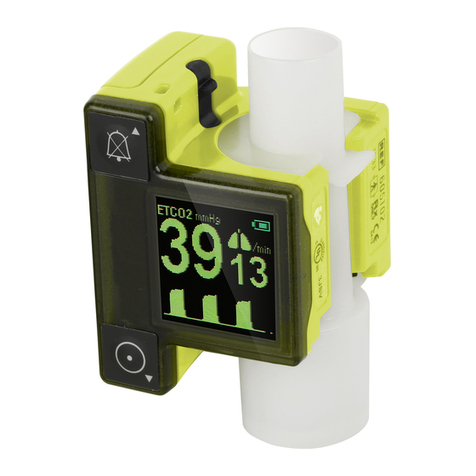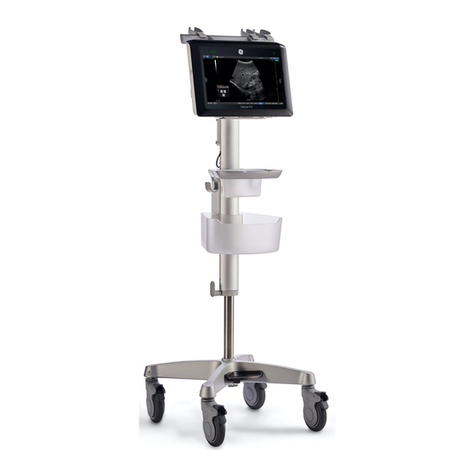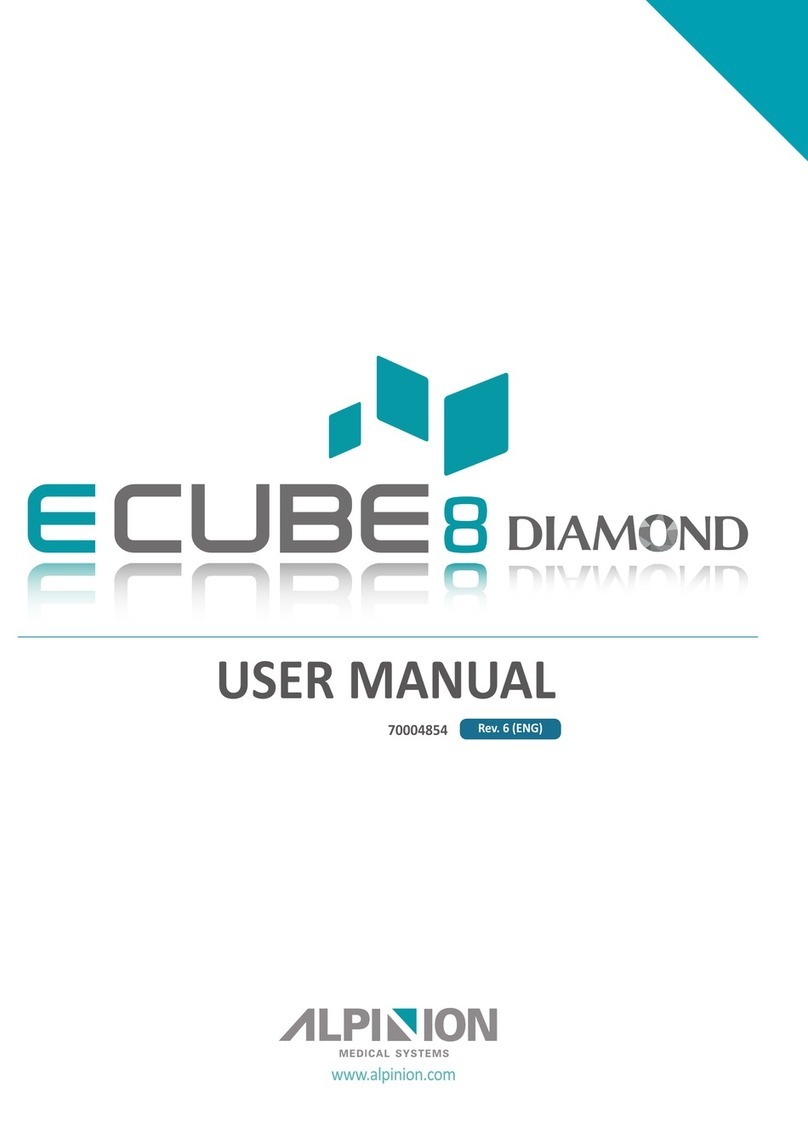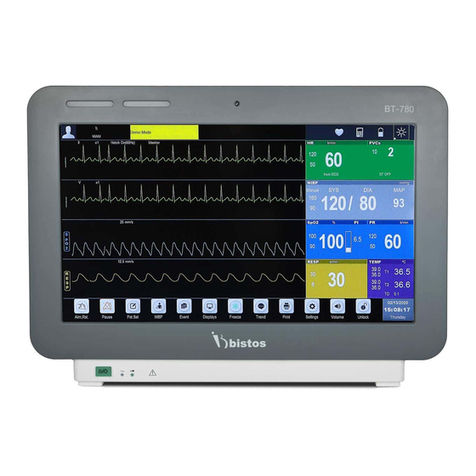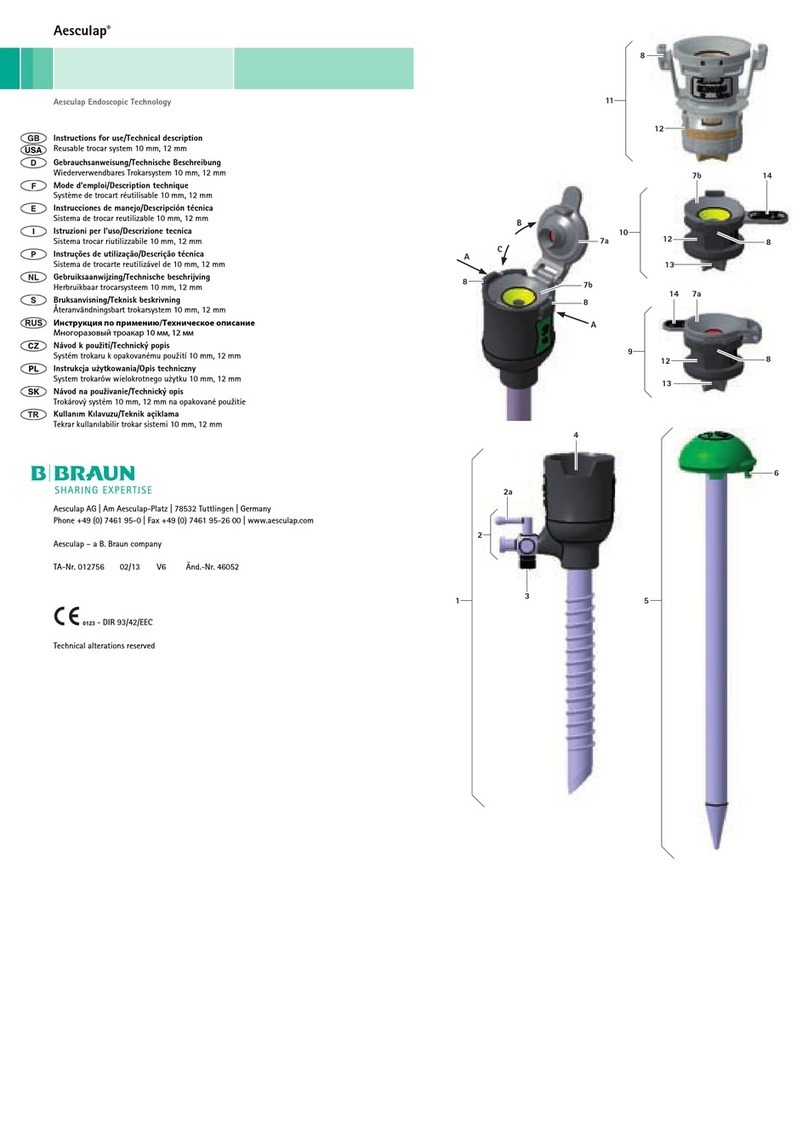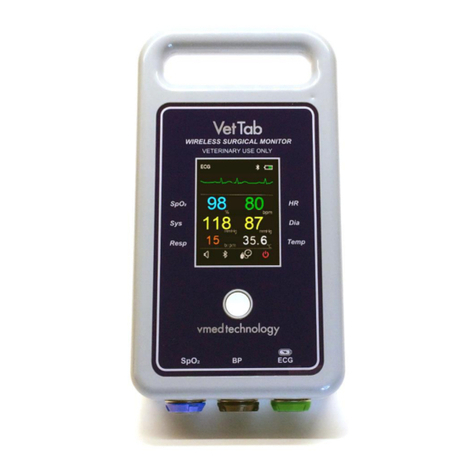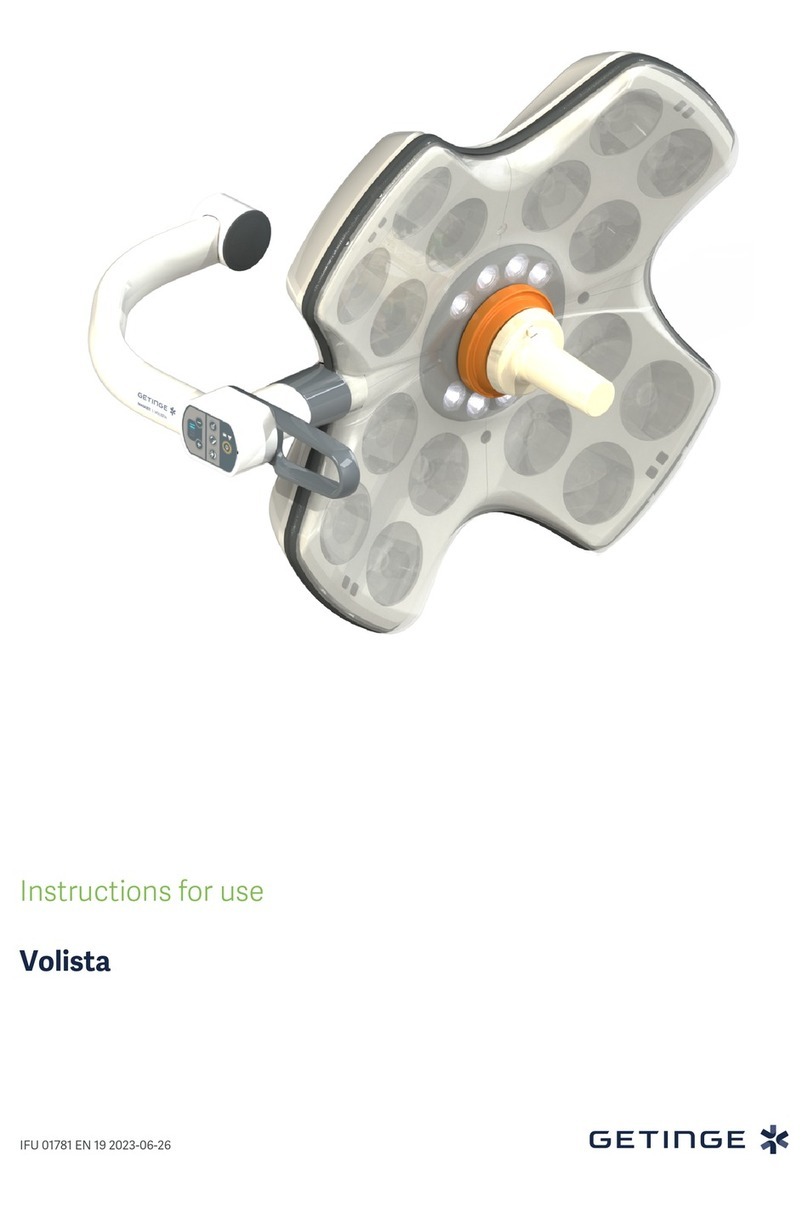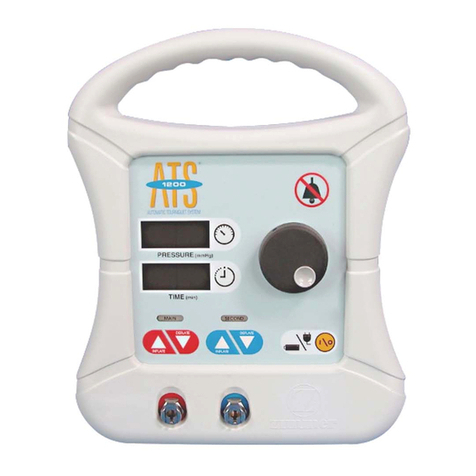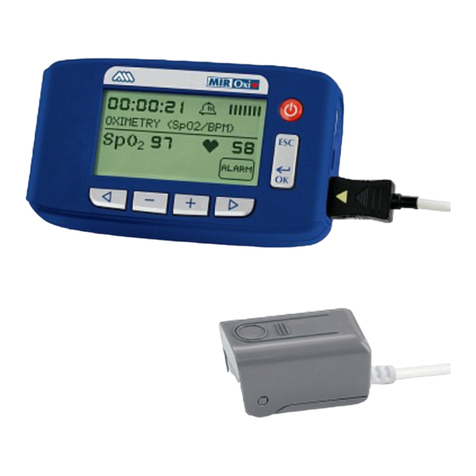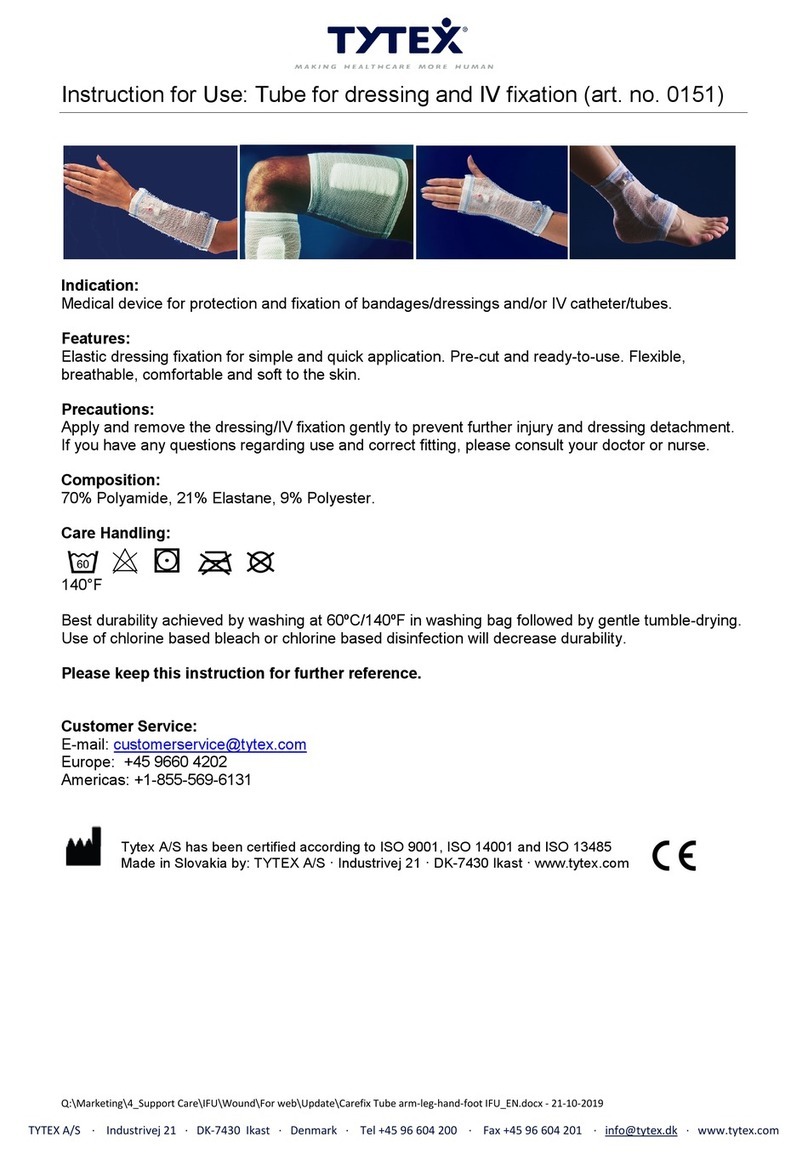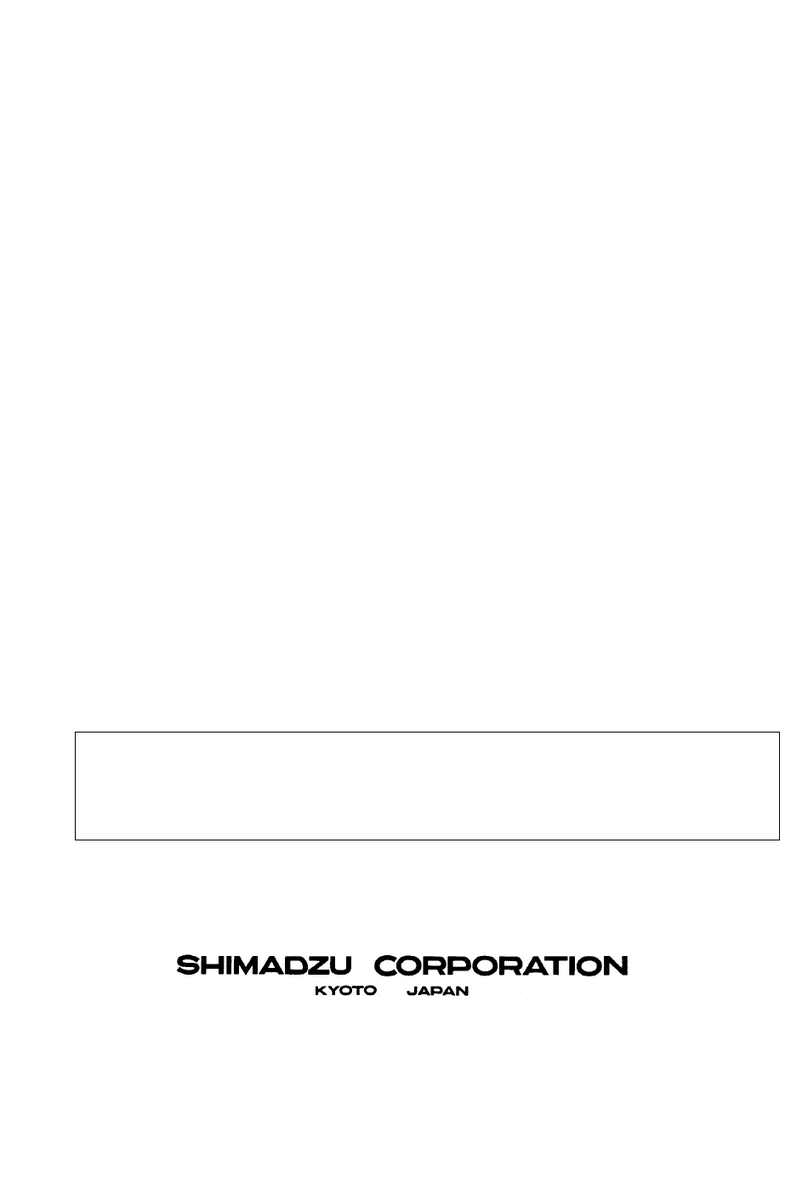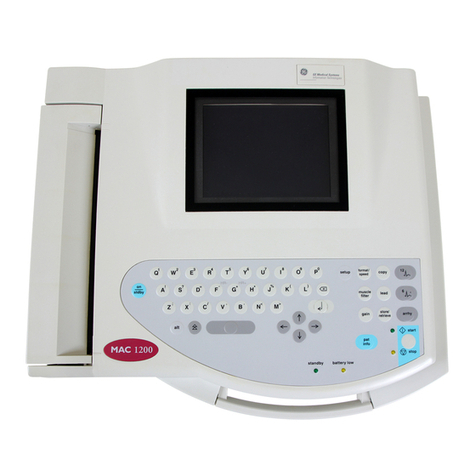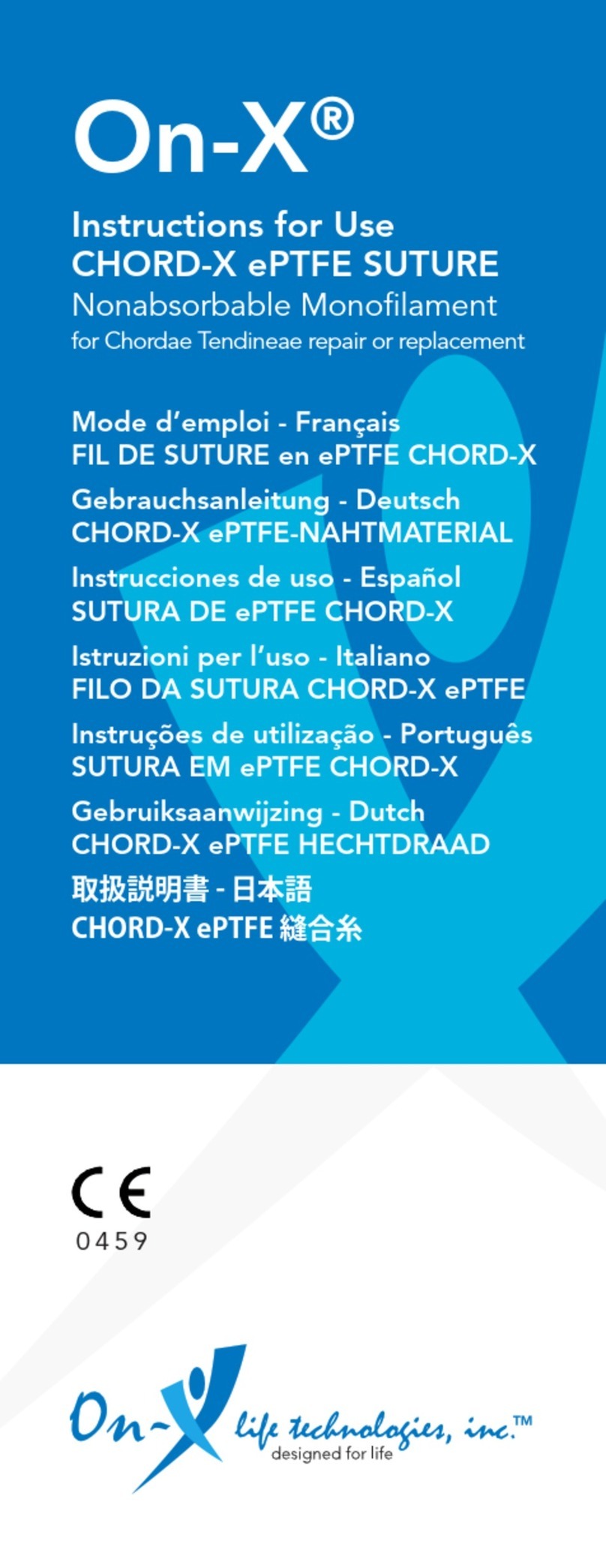MIE medical research H-Wave 4-pad User manual

Doc 118/1
H-Wave 4-pad
Instruction Manual
A New Concept in electrotherapy
MIE Medical Research Ltd, Tel: +44(0)113 2793 710
6 Wortley Moor Road, Fax: +44(0)113 2310 820
Leeds, e-mail: hwave@mie-uk.com
LS12 4JF.
United Kingdom
0120

Page 2
CONTENTS
Warnings 3
What is H-Wave? 4
Two Modes of Action 4
Low Frequency 4
High Frequency 4
Understanding H-Wave 5
What is Frequency? 5
Two Modes of Action 5
What is Intensity 5
The Importance of Intensity 5
The 4-pad H-Wave Therapy Unit 6
Channels 6
Intensity 7
Frequency 7
Timer 7
Battery 8
Warning 8
Re-charging the battery 8
Battery Charger Instructions 9
Features 9
Operation 10
Using the H-Wave 11
Points to Remember 12
Therapy 13
Notes 14
Pad Placement 15
Neck 16
Shoulder 17
Upper Limb & Hand & Wrist 18
LowerBack 19
Low Back (with referred pain) 20
Hips 21
Lower Limb & Ankle & Below 22
Lower Limb Above Ankle 23
Bilateral 24
General Contra-Indications 25
Warnings & Symbols 26
Disclaimer of Warranty 27
Additional Information 27
Technical Specifications 28

Doc 118/1
WARNINGS
This instrument is a Class II, Type BF Applied Part device
according to BS5724 Part 1.
Suitable for continuous use.
Use only MIE battery charger supplied.
Not suitable for use with flammable gases. Protect against
water. Do not use in a sterile environment.
This Product complies with EN60601-1-2 for EMC and
interference potential. Use only MIE approved accessories to
maintain integrity.
No user serviceable parts. For service contact MIE or your
supplier.
Store/transport between +5°and 45°C in dry conditions.
Transport using the original packing materials.
Manufactured by MIE Medical Research Ltd.,
6 Wortley Moor Road,
Leeds,
LS12 4JF,
United Kingdom.
Tel: +44 (0)113 2793 710 Fax: +44 (0)113 2310820

Page 4
WHAT IS H-WAVE?
The MIE H-Wave is an unique electrotherapy machine which combines
muscular and neurological stimulation (MANS) for the first time. It has
been developed over a number of years and heralds a new generation in soft
tissue injury treatment.
MIE H-Wave generates a signal that is revolutionary in electrotherapy : a
bipolar exponential decaying waveform, which enables greater and deeper
penetration of a lower current, whilst using significantly less power than
other machines.
TWO MODES OF ACTION
The H-Wave can be applied in two ways: using low frequency or high
frequency impulses through special pads placed over and near the injury.
LOW FREQUENCY (2Hz)
The low frequency “therapeutic” mode creates visible muscular
contractions, which increase the venous return of blood and stimulate
lymphatic drainage through an injury site.
The dramatic increase in blood flow and lymph flow accelerates the
removal of pain producing chemicals and toxins, which build up around the
injury, thus reducing pain. The lymphatic system can then operate more
efficiently which, in turn, assists the removal of oedema and stimulation of
the healing process.
The H-Wave moves all muscle groups comfortably and with no appreciable
muscle fatigue or discomfort to the patient.
HIGH FREQUENCY (60Hz)
The high frequency “pain control” mode produces a different therapeutic
effect: that of deep analgesia/anaesthesia. This is achieved by shutting down
the transmission of pain signals and is also believed to stimulate the body’s
own natural pain reducing chemicals known as endorphins.
In acutely painful conditions, H-Wave on high frequency may be applied to
anaesthetise an area, before proceeding with low frequency therapy
treatment. If discomfort persists after low frequency therapy, high
frequency can be used to improve patient comfort.

Doc 118/1
UNDERSTANDING H-WAVE
WHAT IS FREQUENCY
Frequency is the rapidity of the H-Wave signal. Whilst the actual shape of
the signal stays the same, low frequency causes muscle stimulation, whereas
high frequency results in analgesia/anaesthesia.
TWO MODES OF ACTION
The importance of the frequency control therefore, is that the two extremes
of the frequency range produce totally different results.
At the low frequency (2Hz) the muscular contractions enable the MIE H-
Wave machine to be used as a therapeutic unit for the treatment of a very
large number of musculo-skeletal and circulatory problems.
At the high frequency (60Hz – similar to 120Hz for TENS machines) the
pain killing effect of the H-Wave may be used to treat conditions as far
ranging as dental and jaw problems to acute lumbar disc lesions and many
other acute pain conditions.
WHAT IS INTENSITY?
The intensity is the strength of the H-Wave signal. The higher the intensity,
the stronger and deeper the signal will penetrate. The unique signal of the
H-Wave allows excellent penetration with little skin resistance, thus
enabling comfortable, deep therapy.
THE IMPORTANCE OF INTENSITY
In the low frequency mode, the greater the degree of intensity, the more far-
reaching the muscular pumping effect and therefore, the more effective the
treatment. Since many injuries occur in deep tissues, it is important that the
patient should be treated at the highest intensity (subject to patient comfort
being maintained). This will obtain the best and most rapid results.
In the high frequency mode, the intensity should only be raised to the point
where effective pain control is achieved.
In both cases, the response of the patient should be carefully monitored and
the rate of increase should relate to the patient’s comfort. If discomfort
occurs when increasing the intensity it is advisable to pause or marginally
reduce the intensity, to allow the patient to accommodate to the higher level.

Page 6
THE 4 PAD H-WAVE THERAPY UNIT
All controls, indicators and sockets are located on the front panel. Main
features are:
CHANNELS
The 4 Pad H-Wave Unit has two distinct channels (A and B) that work
independent of each other. The control knobs, lead sockets and leads are all
colour coded to make identification easy. Each channel is independently
turned on by its intensity control (amber light on).
Place the green leads into the green output sockets (A) and the blue leads
into the blue output sockets (B).
Attach the electrodes to the subject as indicated later in this manual and
connect them to the leads.

Doc 118/1
INTENSITY
The rotary Intensity switch switches the power on for the channel as well as
increases the Intensity level. To increase the intensity of the signal, slowly
increase the rotary switch clockwise to the desired level. This is best done
by the patient so they can control the intensity to the maximum bearable
level.
FREQUENCY
When the H-Wave is first switched on, the frequency indicator will be
flashing. This indicates that the frequency is at 2Hz (default setting). To
change the frequency to 60Hz, press the push button to the left of the
flashing indicator. The indicator will be on continuously when 60Hz is
selected.
TIMER
When a channel is active, a red LED display indicates the timer function.
Initially it will read Co meaning Continuous use.
To change the time to operate for a fixed period, press the black up/down
buttons underneath the display. The timer will increase in 5-minute intervals
to a maximum 95 minutes. The display will count down indicating the
therapy time left in minutes, unless the timer is re-set.
An audible signal will be given when the treatment period has finished and
the output will stop automatically. The LED display will show the letter E
to indicate End
The amber Therapy indicator (flashing for 2Hz operation or continuous for
60Hz operation) will switch off.
The audible signal can only be silenced by switching off all intensity
controls.
H-Wave will not allow the operator to run consecutive therapies unless all
intensity controls have been turned off – this is a safety measure.

Page 8
BATTERY
The 4 Pad H-Wave is battery operated. When the battery is low, the red
alphanumeric display will start to flash. If the battery is further discharged,
the H-Wave automatically switches off when the battery level drops below
a certain voltage level.
Should the H-Wave switch off for any reason (e.g. low battery condition, or
timed out) you can only re-start treatment by switching off both channels.
You should wait 2 seconds before switching back on again. This is to
prevent the therapist from accidentally subjecting the patient to a large
signal.
WARNING:
The H-Wave should never be stored in a ‘low battery’ condition,
otherwise irreversible damage will be caused to the battery, which will
invalidate the guarantee.
It is suggested that the H-Wave is charged over night after use. The H-
Wave charger is specially designed to reduce the charge to a trickle
when the battery is fully charged.
In a ‘low battery’ situation, the battery must be charged immediately
for at least 12 hours.
RE-CHARGING THE BATTERY
The battery should be recharged using only the battery charger provided.
The use of any other charger is not recommended, may be hazardous and
invalidates the guarantee.
Whilst the battery is being charged, the instrument will not function. This is
a special electrical safety feature.
If you accidentally leave the H-Wave switched on during charging, when
you remove the charger, an audible signal will be given indicating that the
instrument must be switched off before treatment can start. No current will
be produced until the unit is reset (It is necessary to wait 2 seconds before
switching on again).
The battery can be re-charged at any time and cannot be overcharged.

Doc 118/1
BATTERY CHARGER INSTRUCTIONS
The battery charger provided utilises the latest computer controlled
technology designed to give greater charging control of Lead Acid batteries,
with increased reliability.
What follows is the procedure for the correct operation of the battery
charger:
1) Make sure the charger is unplugged.
2) Plug the charger in and switch ON.
3) During start up the charger will determine battery status and depending
on the result will switch to either bulk charge mode (red indicator on)
or float charge mode (green indicator on). Note, when the charger
enters float charge mode the battery is 100% fully charged.
4) If neither of the indicators illuminate then unplug the charger, check the
fuse in the plug, replace if necessary, plug back in and switch ON.
FEATURES
Short Circuit Protection – Prevents damage to the charger if the dc output is
short-circuited, visual indication is by alternate flashing red and green
indicators.
High Temperature Protection – if the internal case temperature rises above a
pre-determined level the system is designed to automatically shut down the
charging current, thus reducing the case temperature. As the temperature
reduces the charger will automatically turn up to the maximum charging
current available. Simultaneous flashing of the red and green indicators
will visually indicate high case temperatures.
Soft Start – On power up the system will enter a “soft start” mode. This
facility checks for possible faults i.e. reverse battery connection, short
circuit etc. before offering maximum charge current.
Constant Current Bulk Charge and 3 Stage Charging – Provides the fastest
possible way to recharge your H-Wave battery without overcharging.
Constant Voltage Float – Compensates for self discharging, holding the
battery at peak charge, ready for use. The battery can be left on charge until
required without fear of overcharging.
Proportional Charging – Automatically, proportionally adjusts the second
(constant voltage) stage length of charge based on time taken to carry out
the first (constant current) stage. This facility allows optimal charging by
eliminating overcharging and compromise of fixed charge timers.

Page 10
OPERATION
First stage – constant current (CC) mode.
Visual indication: Red LED on, Green LED off.
Second stage – constant voltage (CV) mode.
Visual indication: Red LED on, Green LED off.
Third Stage – float charge mode. The battery will be maintained 100%
charged.
Visual indication: Green LED on, Red LED off.
Note: On power up the charger will appear to be in float mode for a short
period of time. This is to complete all checks as described in feature “soft
start”.
Charger Status LED Status
Bulk charge mode Red – static ON
Float charge mode (charge
complete) Green – static ON
Battery reversal detected Red – flashing
High temperature detected Red + Green flashing simultaneously
Short circuit Red + Green flashing alternately
Open circuit Red + Green static simultaneously

Doc 118/1
USING THE H-WAVE
It is important that the manual is fully read and understood before
commencing treatment with the H-WAVE. Should the operator have
doubts at any time in relation to application, contact should always be
made with MIE Medical Research Ltd prior to commencing or altering
treatment.
The applications of the H-WAVE vary in relation to the problems from
which patients are suffering, for example, whether they are in acute pain or
have chronic long-term problems, muscular damage or other conditions. In
acute pain cases, a combination of High Frequency analgesia/anaesthesia
followed by Low Frequency therapy can be used with great effect. With
other less acutely painful problems a period of Low Frequency therapeutic
application may be all that is required. In either case, if pain persists, High
Frequency can be used at the end of treatment to improve patient comfort.
For example, with a patient suffering from acute low back discomfort, a 10-
minute session of High Frequency analgesia/anaesthesia should control the
pain sufficiently for a period of Low Frequency therapy to take place. This
is an effective means of obtaining both reduction in pain and improvement
in the basic musculo-skeletal condition.
The length of therapy treatment will vary according to the complexity and
nature of the problem, but should continue for at least 20 minutes and, in
most cases, for not more than 60 minutes. With chronic problems, where
there is extensive oedema, and/or with certain sporting injuries, treatment
may be continued for longer but advice is best sought on this prior to
application. If the patient is to be treated daily, the length of treatment times
can be reduced.
The H-WAVE High Frequency treatment is very effective for the
immediate relief of pain. But, it must be remembered that it is the Low
Frequency therapeutic mode, which provides the effective long-term relief
from any soft-tissue problem.

Page 12
POINTS TO REMEMBER
1. Prior to commencement of treatment make sure that the H-WAVE
machine is adequately charged.
2. Follow the Pad Placement positioning in the User's Guide.
3. Cleanse the skin with the electro-conductive solution provided prior to
application of the pads and use the solution to improve skin contact and
patient comfort.
4. Always make sure that the relevant Intensity control/Channel indicator
is off when either applying or moving the pads. Both operator and
patient may experience considerable discomfort if the relevant Intensity
control is on while pads are being applied or moved.
5. Regularly check the pad contacts, ensuring that they do not rise from
the skin as this can cause a stinging sensation. In very rare instance, a
patient may experience discomfort even though the pad/skin contact is
good. Should this occur, remove the pad and add more electro-
conductive solution. Replace the pad. If discomfort still occurs, re-site
the pad slightly away from its original position.
6. Always increase the Intensity slowly. The response of the patient
should be carefully monitored and the rate of increase should relate to
the individual patient's comfort. When increasing Intensity, if
discomfort occurs it may be advisable to pause, or marginally reduce
the Intensity whilst patient accommodation takes place.
7. Not all patients will respond with visible external contractions at the
first or even second treatment, but they will feel a pulsing sensation, in
severe conditions, it may take aperiod of time to obtain avisual
response. This does not mean the treatment is not effective.
Contractions will gradually become visible as the condition improves.
8. When using the High frequency analgesia/anaesthesia mode, the
Intensity should be increased even more slowly than in the Low
Frequency therapy mode as the patient effect is more profound.
9. If any problems are experienced in the use of the equipment always
contact the MIE Medical Research Ltd for advice.

Doc 118/1
THERAPY
Switch on the Intensity control (amber LED should flash indicating
2Hz therapy mode) and SLOWLY increase it as high as possible on
each Channel maintaining patient comfort, creating visible muscle
contractions.
Therapy is then given for a minimum of 20 minutes.
The response of the patient should be continuously monitored
during the increase of the Intensity controls. The rate of increase
should always relate to the patient's comfort.
It may take some time to reach a high setting (especially for initial
treatments). In these situations, raise the Intensity in small steps,
giving the patient time to accommodate to the increased sensations.
In the rare event of the patient being unable to accept the Intensity
at a high setting in Low Frequency therapy, turn the Intensity down
to 1 and then the Frequency up to high. Very gradually increase the
Intensity to a high setting and treat for 10 minutes at High
Frequency (if discomfort occurs it may be advisable to pause or
marginally reduce the Intensity, whilst patient accommodation
takes place). This will produce an analgesic/anaesthetic effect and
make it more comfortable to subsequently increase the Intensity to
a high setting when Low Frequency is being used. Then proceed
with therapy for 20 minutes as specified above.
Always reduce the Intensity setting to 1 before adjusting the
Frequency.
To improve patient comfort if pain persists after treatment, turn the
Intensity down to 1and the Frequency up to high on the Channel(s)
over the pain site. VERY GRADUALLY increase the Intensity to a
high setting and treat for 10 minutes. If discomfort occurs it may be
advisable to pause or marginally reduce the Intensity whilst patient
accommodation takes place.
THIS CONCLUDES THE TREATMENT.

Page 14
NOTE:
•The second time the patient is treated at Low Frequency it should be
possible to bring the Intensity up to a higher level.
•Remember, Intensity is the key to the removal of oedema, chemicals
and toxins and crucial to long-term pain relief.
•If the condition is chronic, or there is extensive oedema, treatment time
can be extended to 60 minutes (e.g. 40 minutes on Low Frequency
therapy, followed by 20 minutes on High Frequency
analgesia/anaesthesia).
•The only variation between acute and/or chronic therapy is the overall
period of treatment. In most cases, treat the patient 3 times in the first
week, twice in the second week and subsequently as necessary.
•In acutely painful cases, it is often advisable to commence with a few
minutes anaesthesia before therapy. In these instances, the Frequency
should be set to High and then the Intensity turned on and very
gradually increased to the maximum comfortable level of a high
setting on the Channel over the pain site (if discomfort occurs it may be
advisable to pause or marginally reduce the intensity, whilst patient
accommodation takes place). The patient should be treated for 10
minutes in this mode before proceeding with the Low Frequency
therapy and concluding, if required, with High Frequency
analgesia/anaesthesia through the Channel(s) over the pain site.
•If used immediately post-surgery, the maximum Intensity setting at
Low Frequency should be increased to the maximum comfortable
level.

Doc 118/1
PAD PLACEMENT
The pads should be placed at muscle motor points if possible, for maximum
contraction and optimum therapeutic benefit.
THESE ARE ONLY AGUIDE AND MAY BE ALTERED TO SUIT
THE THERAPIST OR INDIVIDUAL PATIENT.
If the patient experiences discomfort from one pad, this can be re-
positioned slightly away from the original site (remembering to reduce the
Intensity setting to 1 before moving the pad).
Always place the pads connected to Channel A over the injury site. The
pads to Channel B should be placed over the nearest major muscle. This
ensures maximum movement of fresh blood and lymph fluid through the
area during therapy.
When using High Frequency to obtain analgesia/anaesthesia, only use the
pads over the injury site. These are always shown in this document as the
pads connected to Channel A. During this procedure, Channel B may be
operated in the Low Frequency therapy mode.
However, there may be instances (especially where there is widespread
pain over a large area) when High Frequency analgesia/anaesthesia may be
administered through both Channel A and B. This is at the discretion of the
therapist.

Page 16
NECK
Always place the pads symmetrically.
Treat through the problem area and the largest muscle groups in the region.
A Over problem area
B Over middle fibres of Trapezius
Always treat to a maximum comfortable Intensity for the patient. Higher
Intensity levels are often possible in second and subsequent treatments.
High frequency analgesia/anaesthesia should be used on the channels over
the pain site. During this procedure, channel B may be operated in the Low
frequency therapy mode.

Doc 118/1
SHOULDER
Treat through the problem area and the largest muscle groups in the region.
A Through the problem area
B Over middle fibres of Trapezius and Deltoids
Always treat to a maximum comfortable Intensity for the patient. Higher
Intensity levels are often possible in second and subsequent treatments.
High frequency analgesia/anaesthesia should be used on the channels over
the pain site. During this procedure channel B may be operated in the low
frequency therapy mode.

Page 18
UPPER LIMB & HAND & WRIST
Treat through the problem area and the largest muscle groups in the region.
Elbow and above:
A Not Shown - Through the problem area
B Over middle fibres of Trapezius and Deltoids (marked B)
Below elbow:
A Through the problem area
B Over Brachialis & Forearm Flexors (marked C in diagram)
Always treat to a maximum comfortable Intensity for the patient. Higher
Intensity levels are often possible in second and subsequent treatments.
High frequency analgesia/anaesthesia should be used on the channels over
the pain site. During this procedure channel B may be operated in the low
frequency therapy mode.

Doc 118/1
LOWER BACK
Place the pads symmetrically over the back.
Treat through the problem area and the largest muscle groups in the region.
A Through the problem area
B Over Erector Spinae Motor points (T10 – T12).
Always treat to a maximum comfortable Intensity for the patient. Higher
Intensity levels are often possible in second and subsequent treatments.
High frequency analgesia/anaesthesia should be used on the channels over
the pain site. During this procedure channel B may be operated in the low
frequency therapy mode.

Page 20
LOW BACK – REFERED PAIN
Treat through the problem area and the largest muscle groups in the region.
A Along Path of referred pain
B Over Erector Spinae Motor points (T10 – T12).
Always treat to a maximum comfortable Intensity for the patient. Higher
Intensity levels are often possible in second and subsequent treatments.
High frequency analgesia/anaesthesia should be used on the channels over
the pain site. During this procedure channel B may be operated in the low
frequency therapy mode.
Table of contents
